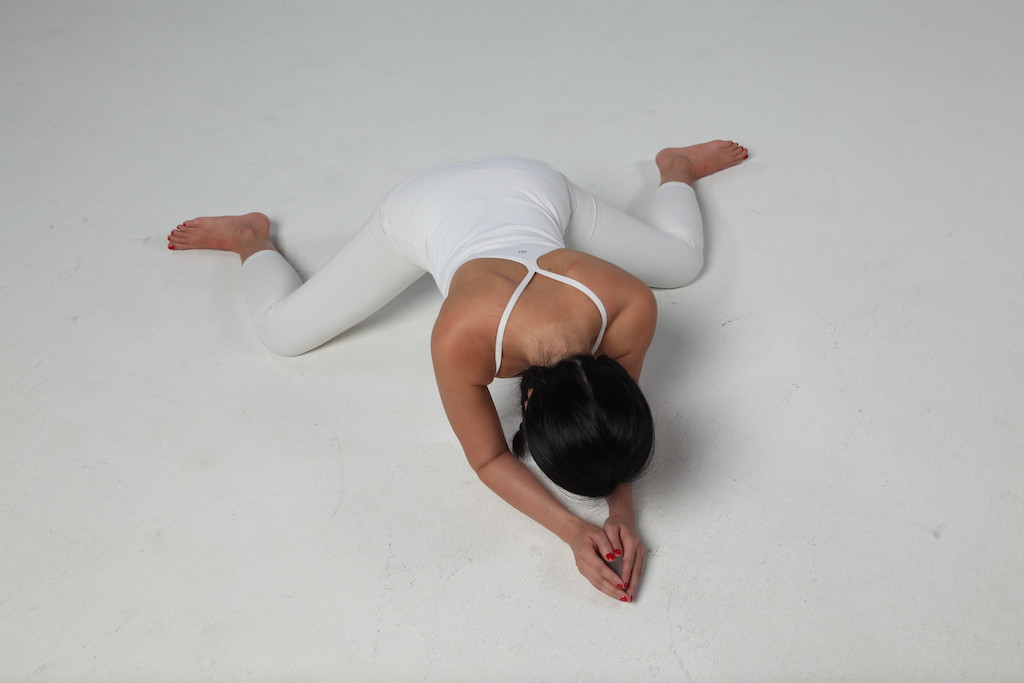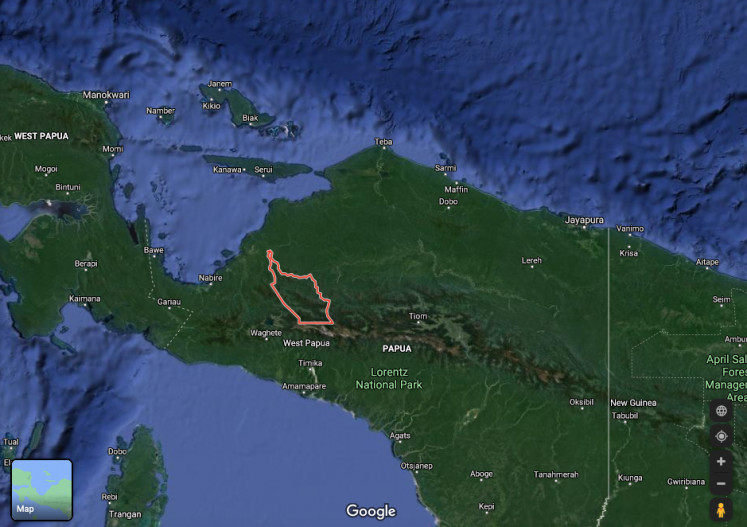Yin Yoga: Mindfulness for well-being during a pandemic
One effective method to combine mindfulness practice and physical exercise is Yin Yoga.
Change text size
Gift Premium Articles
to Anyone

O
ne way to stay composed in this unsettling time is by practicing mindfulness, a self-help technique to cope with adversity that was recommended by the World Health Organization in its illustrated guide Doing What Matters in Times of Stress issued in April.
Mindfulness, as the word suggests, means the mind full of nowness that pertains to awareness in the present moment. It could be done in a number of forms, the most well-known is meditation.
Commonly practiced in a comfortable sitting position, mindful meditation involves focusing our attention, such as our breath, and paying attention to our sensations, feelings and thoughts in the moment without commentary or judgment -- just being “here and now” with ourselves. But it is not as easy as it sounds.
A meditation practitioner for over 15 years, Cindy Yap, an administrative officer currently working in Kuala Lumpur, Malaysia, said that being intensely aware of what is happening at the moment might take a lot of work.
“I found it difficult when I started meditating for the first time,” she said in a recent interview. “But I didn't give up, knowing its psychological benefits to reduce my stress.”
Findings from studies by John Hopkins University in Baltimore, the United States, in 2013 suggest that mindful meditation could help to ease psychological stresses such as anxiety, depression and pain. Studies have also shown that mindful meditation can help to improve our immune system, assisting our body to fight off infections.
However, some meditation techniques are easier said than done, thus, it can result in participants giving up the practice rather quickly.
“My mind got easily distracted, not to mention the physical numbness in my legs,” Cindy said. “I tried to focus on my breath to help me get into my body awareness and it eventually settled my mind.”
Her experience shows that by centering ourselves first in the physical body, we can gain an accessible path to mind awareness.
One effective method to combine mindfulness practice and physical exercise is Yin Yoga.
According to its originator, US-based Paul Grilley, it is easier to develop present-focused awareness in Yin Yoga as we hold the postures for long periods of time.
“Learning to stay in stillness in a pose for five minutes at a time trains the mind and body to become calm and endure uncomfortable distractions, both physical and mental,” he said in his book Yin Yoga Principles & Practice.
Paul describes Yin Yoga as moving at a slow pace and holding the poses for a long time, targeting the deeper tissues of the body, which in turn would open the connective tissues and help lubricate the joints that would increase body circulation and flexibility.
The “yin” in the name is meant to emphasize the contrast to “yang” yoga practices that typically use dynamic repetitive movements to exercise the muscles, such as vinyasa and ashtanga.
It is the “other half” of yoga -- yin and yang are opposites yet complement each other.
As a practitioner, I find this intimate practice of yoga allows me to be attentive physically before becoming aware of how I’m feeling in the moment.
As I plug into those mindful moments, I can be an observer of myself. The more I go inside, the better I know myself and later the awareness comes to an acceptance.
Accepting things as they are leads to contemplative practice, making Yin Yoga a prelude to meditation.
Even for long-time meditation practitioners, practicing Yin Yoga gives the value of mindfulness.
“Yin Yoga calms my mind and helps body awareness,” said Tia, a retired company executive who has practiced meditation since 2012 before discovering Yin Yoga two years ago. "I use both Yin Yoga and meditation in my mindfulness exercise. If my mind is very distracted and it is difficult to do pure meditation, I do Yin Yoga.”
While Yin Yoga helped to relieve her shoulder and hip problems, Tia said it was also a good choice for meditation beginners to learn how to calm the mind by calming the body first.
“It is less intimidating for the participants because they don’t think they are meditating. When you tell the participants that they are going to meditate, their mind may immediately resist and say that they can’t.”
Correspondingly, Michelle Lee, a yoga teacher based in Singapore, said her students were able to sit longer in meditation without fidgeting with the help of Yin Yoga practice, which cultivates physical ease by increasing the body’s range of motion while training the mind to be focused and patient by staying in the poses.
“With the slow, long-held poses and quietness, Yin Yoga naturally uncovers the quality of reflections and insights,” Michelle said.
“We learn to plug ourselves to be okay inside with the chaos outside of our body and mind. Especially during this pandemic, practicing Yin Yoga becomes precious.”
Cindy, who also practices Yin Yoga as a substitute for meditation, revealed another health benefit of the stillness. “When we are able to slow down and relax with a focused and calm breath, it impacts our parasympathetic nervous system, which helps to promote the release of good hormones and enable our organs to function better, thereby boosting our immunity.”
This may explain the benefit of practicing Yin Yoga for recovered COVID-19 patient Harry Su, the managing director at Samuel International in Jakarta. During his month-long recuperation, he practiced it every day at home with a Yin Yoga teacher via Zoom.
“The mindfulness aspect of Yin Yoga and its breathing exercises supported the recovery of my damaged lungs caused by the virus,” said Harry, who was hospitalized for two weeks.
“When I first began [practicing Yin Yoga] in early September, it was difficult to sit up in the breathing exercise for an extended time. Now my lung capacity has expanded while my body has become more flexible and stronger.”
Imbuing the “yin” values of focus and patience, along with its essence of awareness and acceptance, were deemed ideal to face this pandemic.
As Michelle put it: “Yin Yoga can shift our view from what looks like an obstacle to be more open to its possibilities.”
We can’t change the situation, but we can put our mind in a better state to deal with it. Yin Yoga paves the way to resemble those “yin” qualities needed, from the mat to living our lives mindfully.
The writer teaches Yin Yoga part-time in Bandung.
Detailed information and guided practices of Yin Yoga are extensively explained at yinyoga.com, which was created by Canadian Bernie Clark, the author of The Complete Guide to Yin Yoga: The Philosophy & Practice of Yin Yoga.









